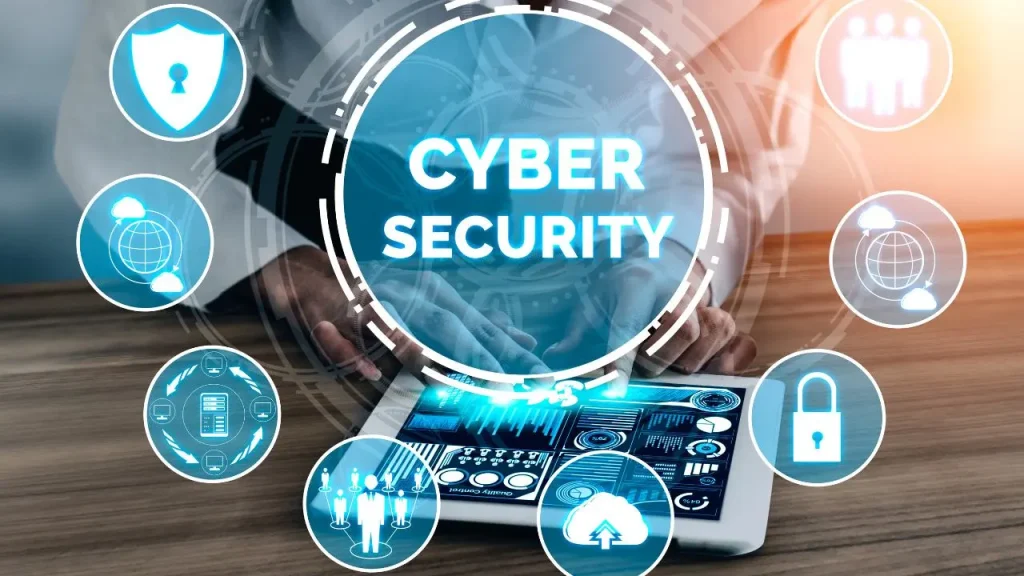Secure Your Business with TTR Technology Cyber Security Solutions

The objective of Cyber security solutions is to create effective defense mechanisms against various cyber threats. These services include firewall and antivirus, encryption, and Multi-Factor Authentication. They are considered essential because they protect data, manage data leaks, support confidentiality, and secure information. Moreover, it allows organizations to protect valuable assets, and customer relations, and incur nominal losses stemming from cyber incidents. TTR Technology is one of the leading cybersecurity solutions providers that helps organizations of various industries prevent hackers from attacking sensitive information of their company and user’s data What are the Top Cyber Security Solutions Your Business Must Implement? Detection Software For Cyber Security Solutions The use of detection software is essential for cyber security solutions. This is a continuous process of analyzing the traffic, log files, or users’ activities in computer networks, systems, or applications, identifying dangerous incidents that may come from cyber threats. Antivirus and Anti-Malware Cyber Security Software They are designed to prevent computers and other devices from getting infected by viruses, malware, and other threats. These solutions detect files, emails, and web traffic with known threats and remove them to prevent further infection and data breaches. Cloud Backup Software Solution Cloud backup software provides an organization with a data backup condition in case of system crashes, deletions, mishaps, or hacking attacks. Furthermore, these solutions are particularly designed with the ability to copy the data to other distant servers in the cloud and make data safe and recovery manageable. Firewall for Cyber Security Solutions A firewall is a system positioned between an internal network and an outside network, which acts as a security checkpoint that controls data and information exchange by using set security protocols. It is a security system that guards users access to specific rights in networks besides detecting and controlling threats’ traffic. Furthermore, they also offer other protections like SQL injection, cross-site scripting, and unauthorized access to resources. Public Key Infrastructure (PKI) PKI services support secure communication techniques, secure business transactions, and preserve the integrity of confidential data from being intercepted or accessed. PKI helps an organization to issue, control, and verify such certificates. Which can be used for data encryption, user and device authentication, and electronic signature verification. One of the most popular uses of PKI is SSL certificates, which are crucial for websites’ security and users’ trust as they involve encryption of data transmitted between the browser and the server. Cybersecurity Measures To Avoid Scams and Phishing For Industries Passwordless Authentication Move away from passwords to more secure and convenient methods of authentication like biometrics, smart cards, or cryptographic keys. Get rid of traditional password protection as the weakest link. Being passwordless helps you protect your business from phishing scams, cramming, and force attacks. Regular Software Updates and Patch Management Make sure to install all the latest updates and patches for every piece of installed software, application, and operating system. Hackers can easily attack on an outdated system. To address these risks, it is necessary to develop a patch management strategy. You can also consult with a Managed IT Service Expert to protect against future threats. Secure Network Infrastructure Ensure that your network has effective firewall security, IDS/IPS, and VPN to reduce vulnerability to malware and other hostile attacks. These technologies assist in filtering traffic, identifying potential threats, and protecting your network and confidential information from cybercriminals. Data Encryption Make sure that data is secure both during transmission and when stored by applying encryption techniques. This means that SSL/TLS should be used when protecting web communication and encryption for storage of data Regular Data Backups Perform backup regularly for data management that matters most for the business by confirming that it is backed up securely and can be easily retrieved in the case of loss or ransomware attack. Back up every store’s data to different offsite facilities to prevent risks from physical and cyber disasters. Incident Response Planning Organizations must implement and continually review an incident response plan that is a guideline for handling cyber-security incidents or data breach events. Develop an incident response plan, determine who is responsible for reacting to cyber-attacks, and continually practice your plan to level the playing field against cyber threats. What Cyber Security Solutions You Should Take If Your Business Becomes a Victim of Cyber Crime Isolate the Affected Systems As soon as the threat is detected, isolate the infected devices from other network-connected devices to stop the malware from spreading further. This can limit the impact and prevent future advancement of the invader. To prevent continued infiltration, shut down remote access from affected systems. Assess the Scope and Impact Assess the impact of the security breach, in terms of which systems, data, and services are involved. Describe the type of cyberattack, weather its ransomware or data leak DDoS attack. It is important to know the degree and form of attack to know how you are going to counter it and which aspect you are going to focus on first. Notify the Incident Response Team In the meantime, inform your internal incident response team and IT staff members immediately. If you have a cybersecurity provider, do not hesitate to consult them first on this issue or consult with TTR Technologies for Cyber Security Solutions. Drawing up an incident response plan can be very successful in helping to facilitate communication within the organization since there will be a clear picture of who is to do what in handling the attack. Preserve Evidence Do not change any of the affected systems until after taking screenshots or other digital images. This includes the use of screen captures, system log captures, and keeping records of odd happenings. Make sure to document all the activities during the response to support the case, and document every scenario encountered during the response. Contain the Breach Using containment techniques to restrict the attack from spreading in the system. This may range from complete isolation of the network segments to even powering off the various used servers. Use loose patches to avoid further
